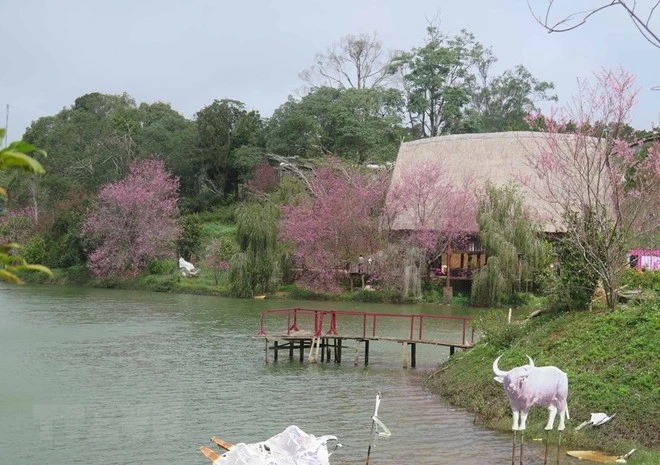Unique experiences turn forgotten destinations into magnets for tourists
The recent tourism boom in the northern mountainous provinces of Ha Giang and Son La and the Central Highlands provinces of Lam Dong and Kon Tum demonstrates how unique tourism products transforms “forgotten lands” into bright stars on the tourism map.


Meanwhile, Lam Dong’s tourism industry also made an impressive comeback in 2024 following years battered by the COVID-19 pandemic. It attracted over 10 million tourists, an increase of 2.3 million compared to 2023, with a significant rise in the number of visitors from Russia and the Republic of Korea. The growth was stemmed from the locality’s successful organisation of multiple events such as the 10th Da Lat Flower Festival, Da Lat city’s recognition as a UNESCO creative music city, as well as festivals connected to characteristic flower seasons on the Langbiang plateau like wild sunflowers, cherry blossoms, and pink grass.
At a recent international conference highlighting Da Lat’s development of green tourism and cultural industry from natural resources, domestic and international experts affirmed the important role of distinctive tourism products while proposing numerous solutions to promote them.
Chairman of the Da Lat People’s Committee Dang Quang Tu said that the city is developing quality tourism products with Da Lat's unique brand and identity such as agricultural tourism experiences at high-tech vegetable, flower, and specialty production areas, and adventure sports tourism like forest trekking, waterfall climbing, and camping.
Deputy Governor of Thailand’s Suphanburi city Apinya Iamampha said it is crucial to create products with brand identity and distinctive characters. Therefore, authorities and businesses need to firmly grasp consumer trends, understand the advantages and core values of the locality, especially regarding indigenous culture and natural features, avoid duplicating products with other localities and regions, and implement effective promotional strategies./.








